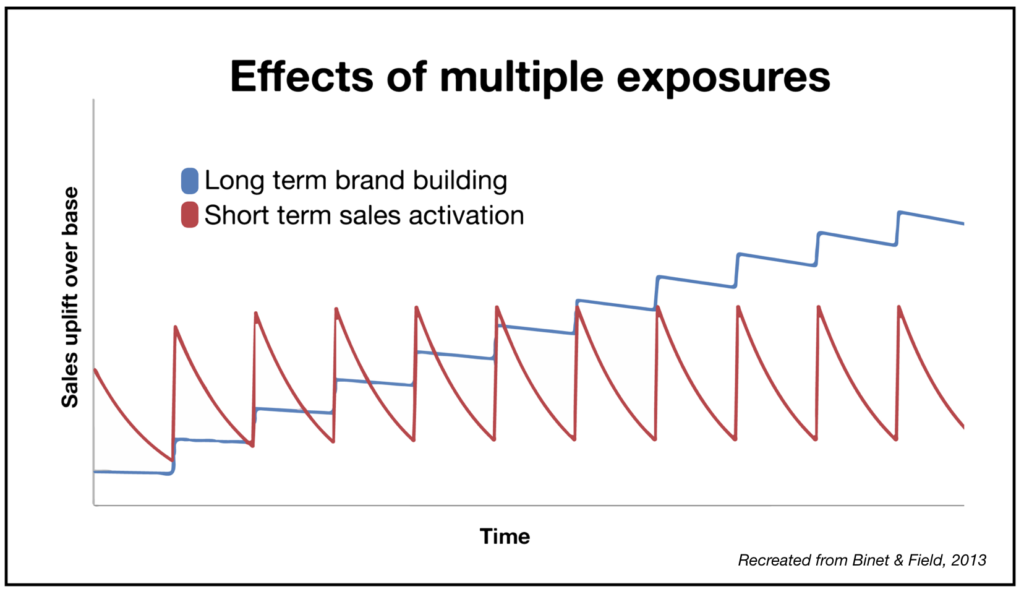At best, marketers have a reputation as practitioners of an imprecise science. At worst, we’re accused of making it up as we go along. In advertising we are particularly known for backing our instincts. Gut feeling will always have a role to play, but evidence-based marketing continues to grow in importance.
EffWeek, the IPA’s annual conference on marketing effectiveness, is built around measuring and understanding marketing success. In Planning at The Union, we geek out over data, but the real benefit lies in helping brands spend their money more efficiently. This year’s conference brought the usual treasure trove of insights, but perhaps the most interesting was around the power of appealing to emotion.
The budget balancing act
There is a constant tension in marketing between boosting response in the short term, and the gradual returns of long-term brand building. A bit of both makes sense, but how to split limited budget between the two is less obvious. That’s where IPA effectiveness gurus Les Binet and Peter Field come in.
Binet and Field turned heads in 2013 when they advocated attempting to reach as many new customers as possible as the best strategy for growth. It was a real kick in the teeth for the disciples of tight targeting.
They advocate splitting budget between long-term brand building and short-term activation (sales promotions, referral programs, etc.) to maximise growth. The sweet spot? Their research recommends a 60/40 split in favour of brand building.
The two effects work in different ways; brand building emotionally and activation rationally. Therefore, you can’t achieve long-term growth through an accumulation of short-term effects. This is a real challenge to orthodox thinking on the subject.

- Rational products still need emotional advertising
Most of our decision-making is emotional, but the balance varies by context. More rational categories such as insurance tend to get bigger returns from activation and less powerful brand effects. Counterintuitively, we should therefore spend more on brand building; to the tune of a 74/26 split compared to 65/35 for emotional categories. Brand building does not work as hard here, so you have to spend more to compensate.
- The principals hold true online
Binet and Field found that online-only brands typically spend double on short-term activation than their offline counterparts. But this isn’t the most effective approach; the best split remains 60/40 in favour of brand building.
Optimums do change in more specific contexts. Purchasing decisions online involving a long search and research phase had an optimum brand/activation split of 78/22. This up-weighting of brand spend was one of the highest in the research, for very similar reasons to rational products more generally. We still need to prime people emotionally in order to influence the research phase.
- (Almost) always spend more on brand building
Binet and Field’s work examines optimum budget splits in over 20 different contexts. Optimums overwhelmingly favoured brand building. Only a few contexts called for prioritising activation.
These included fast food, travel and telcos. These services all share an element of perishability. If you don’t sell burgers and airline seats quickly, they can’t be sold at all. So activation becomes key. However, even these rare cases demanded a sizeable investment in brand.
As theoretical as this all sounds, Binet and Field have proven it affects the real world. They find that brands are increasingly over-investing in activation. Their advertising effectiveness has suffered as a result.

We still have a way to go in honing and applying our research, but we are definitely moving forward. Binet and Field are joined by the likes of Dr Robert Heath (who researches how we unconsciously process advertising) and Byron Sharp (acclaimed author of How Brands Grow) in backing up theory with robust data. A new era of marketing science is fast approaching.